Last Updated on May 23, 2023 by a Friendly Gardener
For those who love plants but don’t want to have to deal with pots and soil, the Tillandsia ionanatha popularly called the Sky plant is a delightful alternative. This air plant species is eye-catching, requires very little maintenance, and is a bit more robust than other air plants. A member of the Bromeliad family, consider that the Tillsandia genus comprises more than 500 species.
As mostly tropical and subtropical plants, they grow naturally without root support from soil beds. Pretty to look at, the Sky plant is a slow-growing air plant that begins very small in size. Grayish-green leaves cluster into a round shape. As they mature, the thin foliage will stretch outward so as to appear wavy, and the foliage color will deepen.
The Sky plant will only bloom once in its lifetime and this happens just before it dies. Blooming can happen at any moment during the year and blossoms may be white or yellow-hued atop purplish shoots. During blooming, leaves will also develop pinkish or reddish coloring only adding to their allure.
As an air plant, the perennial succulent Sky plant should not be placed in potting soil or similar because it is an epiphyte meaning it has the capability to grow on other plant surfaces such as tree branches or trunks. These epiphytes are not parasitic as they fulfill nutrition and moisture needs from the surrounding air. The Tillsandiaionanatha will look lovely when positioned in a shell from the beach, on a piece of untreated wood, or cultivated in a glass terrarium. These epiphytes can be attached to any number of mediums.
Native to the South and Central Americas, the Sky plant offers contained growth reaching as high as 6 inches tall. It can be cultivated outside in USDA Hardiness zones 9 through 11.
Sky Plant Care
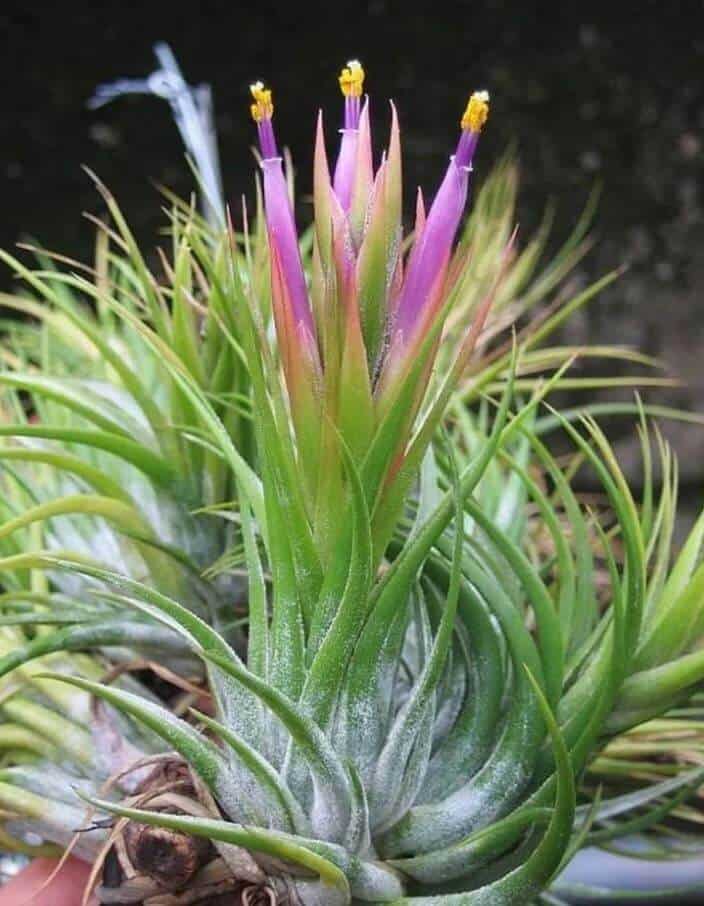
Although this epiphytic species is considered to be relatively robust, it does have care and environmental necessities such as bright light, adequate air circulation, and misting to guarantee its survival.
Growing Medium
As its name suggests, the Sky plant grows in the air and the plant’s root system should never be placed in a potting soil mix. These plants can be hung in the air using an adhesive that is plant-safe or secured with wiring. Should you position it on a piece of natural wood or in a seashell, after approximately a month, roots will attach to and wrap around the hosting material. This will also be the case if you set it on another plant.
Light
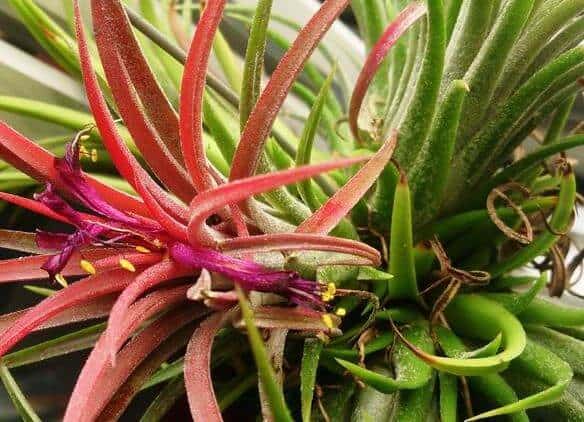
For success in cultivating a Sky plant, proper lighting is crucial. Bright indirect light is ideal. Exposing them to direct sunlight can risk drying them out and foliage may scorch particularly if the environmental humidity level is low. These plants do very well in fluorescent lighting, so they are ideal plants for offices and businesses. If they do not receive sufficient lighting, they will not flower.
Water
Air plants do not require as much water as soil-grown plants, and the Sky plant requires less than other air plant species. Regular light misting several times a week is the key to successful cultivation. These plants should never be soaked. You can place the Sky plant under a running tap if you live in an arid climate but avoid submerging them in water. Once you have finished, turn your plant upside down to gently shake an excess water from the foliage. Dry your plant out before you return it to its habitual location. One of the principal reasons for the demise of these plants is overwatering. Water that remains trapped in leaves will create problems.
Humidity
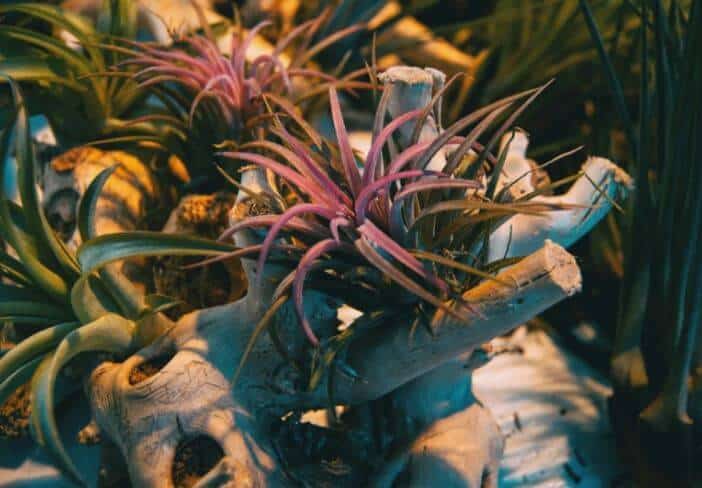
Humidity is vital to the successful cultivation of air plants. The Tillandsia ionantha is a Mesic air plant variety that differs from Xeric varieties. Mesic is derived from the Greek word mesos which signifies “middle”. This category of air plants prefers a moderately humid environment like its native South American forest habitat. (Xeric air plants prefer drier desert climates.)
The Sky plant loves a warm, moderately humid environment, so if you live in a dryer climate or household humidity is low, you will need to increase the frequency of misting the plant. Placing air plants in bathrooms or kitchens where humidity is naturally higher is a possibility.
Temperature
Ideally, your Sky plant should be in an environmental temperature that measures between 60° and 80°F. Just remember to mist regularly, especially during winter heating. An occasional drop in temperature to about 50°F during the winter can encourage flowering.
Feeding
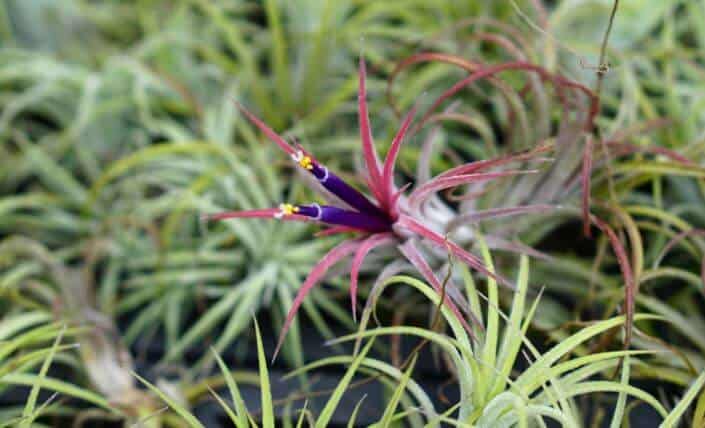
Air plants grow underneath canopies of other vegetation, so as decaying matter disintegrates and falls to the ground, the dust particles are captured by the foliage which features scale-like structures for this purpose. To feed an indoor Sky plant, you may want to fertilize monthly or biweekly during the summer season. Many air plant enthusiasts will use a fertilizer specifically formulated for air plants or by adding organic liquid fertilizer to your misting spray.
Pruning
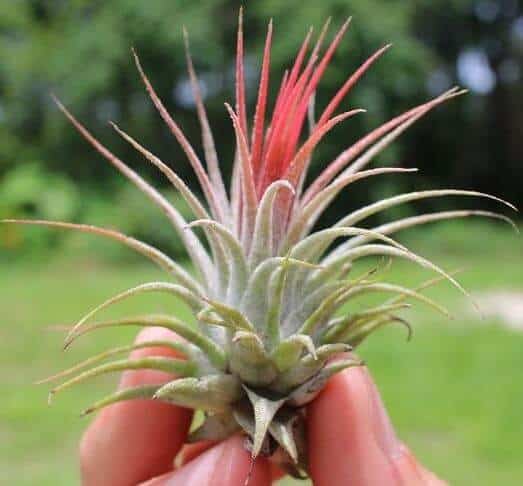
Pruning an air plant is advisable if there are brown or dead leaves. Removing dying foliage will leave space for new leaves to form. Broken leaves, damaged leaves, or dried leaf tips can also be trimmed away. Roots can also be removed if desired as this will not harm the plant.
Sky Plant Propagation
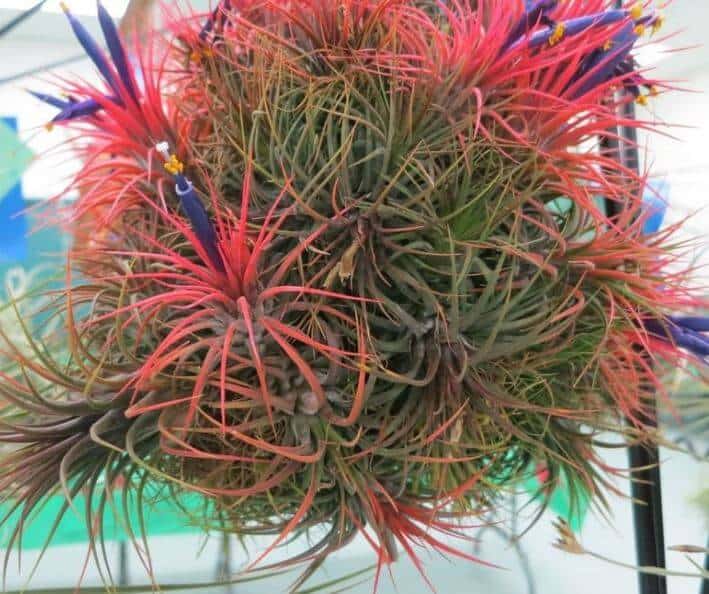
Sky plants are easy to propagate thanks to their production of offshoots or pups. When these plants mature, offshoots will appear. Once the pups grow to at least half of the size of the parent plant, they can be separated or cut away with a sharp sterile knife. Position pups like you would a mature plant on a board or nestled between rocks. You can choose to spoil it a bit by placing the pup in peat mix until it matures further for wood mounting or hanging.
Sky Plant Problems
Thanks to the fact that the Sky plant does not grow in a soil medium, it will attract fewer pests. If your plant does show signs of a pest presence, simply rinse it off and hang it up to dry. Rinsing will generally remove pets from foliage.

